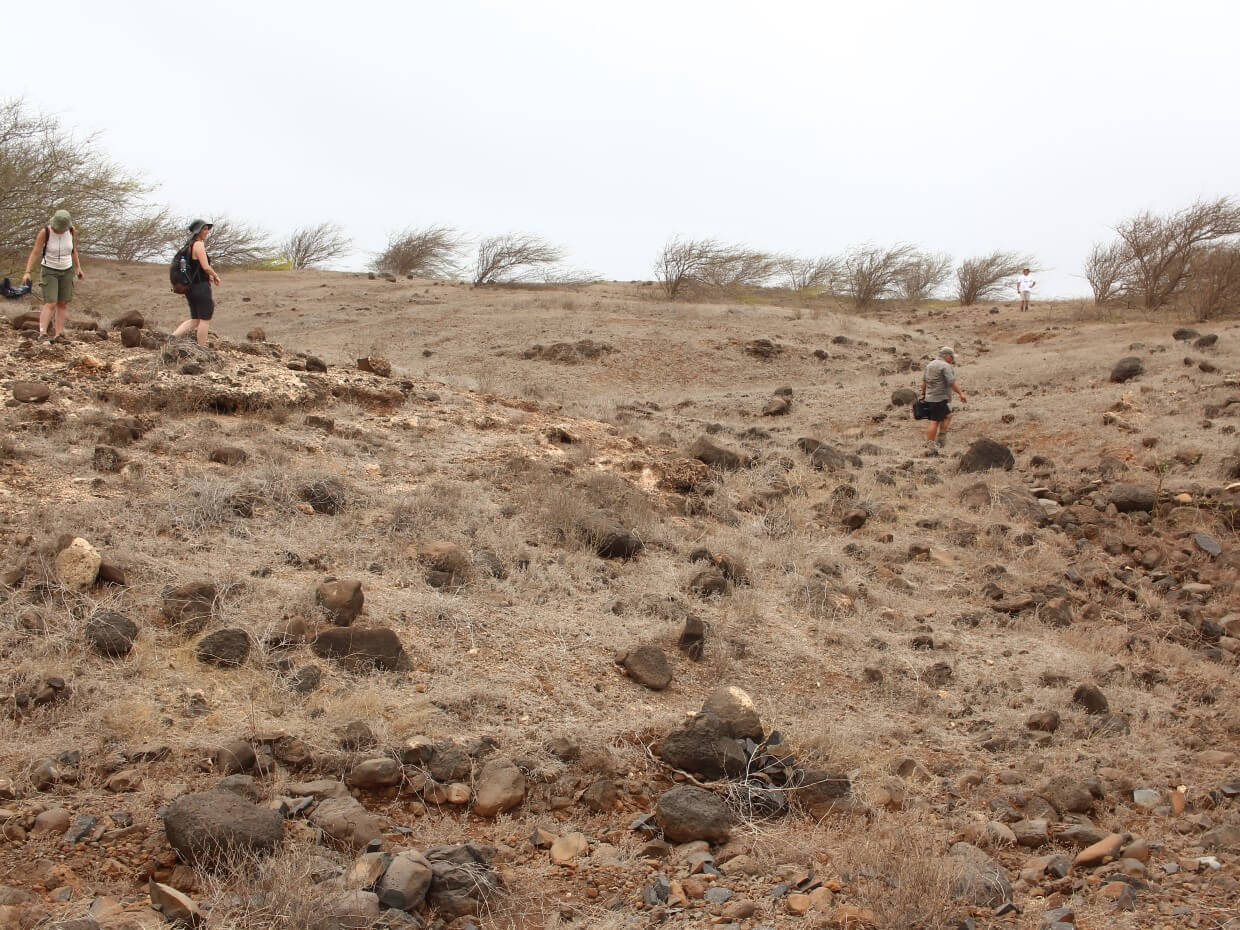Cabo Verde
Cabo Verde is Macaronesia’s southernmost archipelago. Located 600 km off the western coast of Africa between latitudes 14°40’ and 17°30’ N and longitudes 25°30’ and 21°30’ W, the archipelago corresponds to a set of ten volcanic oceanic islands and a few islets, with the oldest subaerial ages ranging from 15.8 Ma at Sal to less than 3 Ma at Fogo (Ramalho, 2011).
The origin of the archipelago is associated with the Cabo Verde hotspot, with volcanic activity ranging from the Oligocene (Ramalho, 2011) to the present on Fogo Island during the 2014/2015 volcanic eruption (Mata et al., 2017).
From the ten islands, marine fossiliferous deposits are known from nine, with ages that range from the Miocene to Holocene (Gudveig Baarli et al., 2013; Johnson et al., 2012, 2013, 2020; Mayoral et al., 2013, 2018; Johnson & Gudveig Baarli, 2015).
Explore Cabo Verde Paleobiodiversity Data
Bibliography
GUDVEIG BAARLI, B., A. SANTOS, E.J. MAYORAL, J. LEDESMA-VÁZQUEZ, M.E. JOHNSON, C.M. DA SILVA & M. CACHÃO, 2013. What Darwin did not see: Pleistocene fossil assemblages on a high energy coast at Ponta das Bicudas, Santiago, Cape Verde Islands. Geological Magazine, 150(1): 183–189.
JOHNSON, M.E. & B. GUDVEIG BAARLI, 2015. Charles Darwin in the Cape Verde and Galápagos archipelagos: The role of serendipity in development of theories on the ups and downs of oceanic islands. Earth Sciences History, 34 (2): 220–242.
JOHNSON, M.E., GUDVEIG BAARLI, B., M. CACHÃO, C.M. DA SILVA, J. LEDESMA-VÁZQUEZ, E.J. MAYORAL, R.S. RAMALHO & A. SANTOS, 2012. Rhodoliths, uniformitarianism, and Darwin: Pleistocene and Recent carbonate deposits in the Cape Verde and Canary archipelagos. Palaeogeography, Palaeoclimatology, Palaeoecology, 329–330: 83–100.
JOHNSON, M.E., B. GUDVEIG BAARLI, M. CACHÃO, C.M. da SILVA, R.S. RAMALHO, J. LEDESMA-VÁZQUES, E.J. MAYORAL & A. SANTOS, 2013. Coastal dunes with high content of rhodolith (coralline red algae) bioclasts: Pleistocene formations on Maio and São Nicolau in the Cape Verde archipelago. Aeolian Research, 8: 1–9.
JOHNSON, M.E., R.S. RAMALHO & C.M. DA SILVA, 2020. Storm-Related Rhodolith Deposits from the Upper Pleistocene and Recycled Coastal Holocene on Sal Island (Cabo Verde Archipelago). Geosciences, 10(11): 419.
MATA, J., S. MARTINS, N. MATTIELLI, J. MADEIRA, B. FARIA, R.S. RAMALHO, P. SILVA & M. MOREIRA, 2017. The 2014 e 15 eruption and the short-term geochemical evolution of the Fogo volcano (Cape Verde): evidence for small-scale mantle heterogeneity. Lithos, 288-289: 91–107.
MAYORAL, E.J., J. LEDESMA-VÁZQUEZ, B. GUDVEIG BAARLI, A. SANTOS, R.S. RAMALHO, M. CACHÃO, C.M. DA SILVA & M.E. JOHNSON, 2013. Ichnology in oceanic islands; case studies from the Cape Verde Archipelago. Palaeogeography, Palaeoclimatology, Palaeoecology, 2013(381-382): 47–66.
MAYORAL, E.J., A. SANTOS, J.A.G. VINTANED, J. LEDESMA-VÁZQUEZ, B. GUDVEIG BAARLI, M. CACHÃO, C.M. DA SILVA & M.E. JOHNSON, 2018. Upper Pleistocene trace fossils from Ponta das Bicudas, Santiago, Cape Verde Islands: Systematics, taphonomy and palaeoenvironmetal evolution. Palaeogeography, Palaeoclimatology, Palaeoecology, 498: 83–98.
RAMALHO, R.S., 2011. Building the Cape Verde Islands. Springer-Verlag Berlin Heidelberg, Berlin, p. 210.
How to cite:
MPDb (2023). Cabo Verde. Macaronesian Palaeobiodiversity Database. https://macpaleo.uac.pt/cabo-








